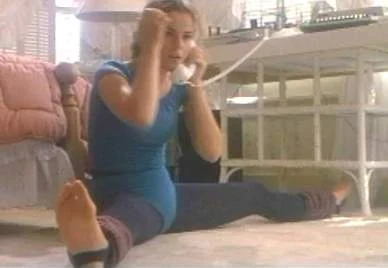“Wargames” may be partly responsible for taking me down the road to geekdom. Of course, it is also responsible for my only-recently-grown-out-of crush on Ally Sheedy.
In the movie, Mathew Broderick, at the time, a relatively unknown actor, but who would go on to such well-known roles as Inspector Gadget and the voice of Simba the lion, plays a clever but harmless computer hacker.
In an effort to play some unreleased games, he hacks into what he thinks is the server for a video game studio, when it is in-fact the combat simulation engine at NORAD.
He accidentally makes the system think that a war is beginning, and with the help of his new girlfriend, whom he recently helped to hack the report cards at their high school, he tries to stop the machine from destroying the entire civilized world.
As a side-note there is a sub-plot to the movie which non-theatrical audiences never got to see, so there may be some of you out there who saw this movie on television, who did not get the entire deal.
In the original theatrical release, there is a sequence of scenes interspersed throughout the movie which depict a pair of men, whose job it is to turn the key and launch the missiles when the orders come down.

After initially failing a test of their reliability (some great percentage of all the key-turners failed to actually turn the key in a real-seeming drill), the two men are replaced, down in their bunker by a computer with access to the main strategic systems at NORAD.
When the movie was reedited for television, all of the scenes with the two key-turners were removed from the film, and the only remaining reference is a statement at a meeting at NORAD, in which one of the specialists
briefly describes the failed drill.
Without those scenes, a large part of the “be careful what you trust to machines over man” message is replaced with a more generic cautionary tale.
One scene which did make it into the final TV cut is the scene which I think pushed me to first be curious about electronics and hardware. I was a child when the movie was first being shown, and had not yet solidified my interests, but Broderick’s paperclip has stuck with me for a long time.
Broderick’s character had just escaped from NORAD by hacking a key-pad lock, and hiding among members of a tour-group. He took a bus to a remote truck-stop, where he stopped to make a call. He got into the booth, and searched his pockets, not for a coin, but for a paperclip.
He picked up the hand- set, and twisted the mouthpiece free. Bending the paperclip into the right shape, he used it to complete a circuit which made the phone think that he had paid for his call.

I was astounded. Everything else the character had done in the movie so far had seen fake and impractical, but this: This was something a guy could really use, a skill that could save someone lots of cash.
Also, unlike the other stuff he had done, I didn’t know if it was possible.
Everything else he had done was blatantly fanciful (though not as bad as the later, more influential, “Hackers,” in which geeks were introduced to Angelina Jolie, and a method of typing which apparently did not require the spacebar), but I wanted to believe that this one was so simple, so elegant, it must be true.
Of course it helped that he was calling Ally Sheedy in leg warmers, which has also stuck with me for a long time.
It may not have been the certain thing that got me into fiddling with electronics, but it was certainly always in the back of my head when I was learning, and every time I tried to do something which was vaguely criminal with my new-found skills, I tried to pull it off with the casual matter-of-factness of Broderick and his free phone call.






